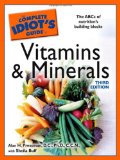|
Phosphorous is important for healthy bones and teeth. It is important for the utilisation of nutrients in the body and in order to release energy inside of the cells.
Phosphorous: In Depth
The body of an adult contains 700 g of phosphorous, 80% of which works closely together with calcium in the skeletal system of the body. In addition to this, phosphorous partakes in most of the processes in the body, in particular those that concern the production and storing of energy, the regulation of the kidney function, the heart and the acid-base balance. Phosphorous acts as a cushion in the blood for the maintenance of the PH-value.
If too much phosphorous is consumed, it can affect the utilisation of magnesium in the body.
Phosphorous: Requirements, deficiency oversupply
Recommended intake of phosphorous according to the DGE* |
Age |
Male |
Female |
19 - 25 |
700 mg |
700 mg |
25 - 51 |
700 mg |
700 mg |
51 - 65 |
700 mg |
700 mg |
over 65 |
700 mg |
700 mg |
*DGE - Deutsche Gesellschaft für Ernährung - a German Nutrition Society
A phosphorous deficiency is relatively seldom. It is merely important that there is a balance between phosphorous and calcium in the body. Most calcium rich foods are also rich in phosphorous so there is usually no problem in obtaining this balance.
Too much phosphorous in the body can cause a calcium deficiency. The intake of too much dietary phosphorous can have a debilitating affect on the utilisation of calcium in the body. In addition the parathyroid is stimulated to produce more hormones. These hormones cause the calcium to be extracted from the bones in order to keep the calcium levels in the blood constant. This causes the decomposition of the bone substance which in turn increases the possibility of getting osteoporosis.
top  |
Phosphorous in Foods:
A phosphorous deficiency is rare in a normal diet as it is present in almost all foods. Protein rich foods such as meat, fish, bread and cheese contain a lot of phosphorous.
In addition to this, so called phosphates are added to foods, e.g. stabilizers and thickening agents. (E 338, E 339, E 340, E 341, E 345) in sweets, Coke, lemonade, soft cheese, sausages and many ready made meals.
Phosphorous in 100 g Foods:
Wheat germ: 1100 mg
Wheat bran: 1143 mg
Crisp bread: 301 mg
White beans: 426 mg
Peas: 375 mg
Soya beans: 550 mg
Feta: 400 mg
Gouda: 443 mg
Emmentaler Cheese: 627 mg
Tinned Sardines: 434 mg
Pork: 204 mg
Pistachios: 500 mg
Brazil nuts: 674 mg
Walnuts: 410 mg
top 

The Complete Idiot's Guide to Vitamins and Minerals, 3rd Edition, Alan H. Pressman, Sheila Buff

Understanding Nutrition, Update (with 2010 Dietary Guidelines), Eleanor Noss Whitney, Sharon Rady Rolfes
top  |

